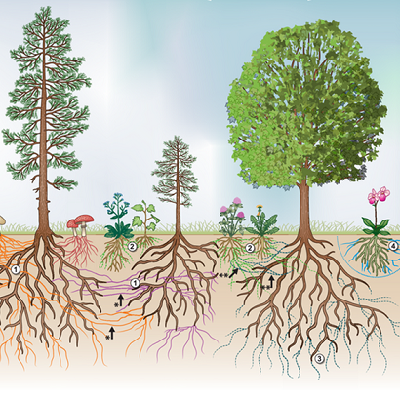Joining the Global Effort on International Day for Biological Diversity
Biodiversity is declining at an unprecedented rate. Yet it remains fundamental to supporting all life on earth. Biodiversity is key to human health as it provides us food, medicine, clean air, water, and security from natural disasters. The UN designated May 22nd as International Day for Biological Diversity to raise awareness about the importance of biodiversity and the challenges it faces. This year’s theme, “Be Part of the Plan,” urges action to reverse biodiversity loss by supporting the Kunming-Montreal Global Biodiversity Framework, also known as The Biodiversity Plan. According to the plan, about 25 percent of assessed species are threatened, with approximately 1 million species facing extinction globally unless we mitigate the factors driving biodiversity decline
Local Perspective: Southeastern Massachusetts
Southeastern Massachusetts is home to many unique habitats that host a variety of flora, fauna, and funga. From Duxbury extending down to the Cape and Islands, we have a globally rare ecosystem known as the Pine Barrens. This ecosystem is dominated by pitch pine and scrub oak and characterized by its sandy, nutrient deprived soil with acidic wetlands and kettle ponds. Over time many species have evolved to tolerate and live in these specialized habitats. Due to this specialized habitat, increasing development, and exploitation of resources and land, many species are endangered or threatened. These habitats need to be protected and kept intact to flourish.
Biodiversity Underneath Our Feet
The ground we walk on, often overlooked, constitutes a living ecosystem teeming with billions of microbes, earthworms, fungi, and insects. Soil, the most biologically diverse material on Earth, harbors over half of all known species. It serves as the foundation for terrestrial environments, offering essential services that sustain ecosystem health and structure.
Fungi in particular play a crucial role as environmental regulators, continuously recycling nutrients to make them bioavailable to other organisms. In nutrient-deprived, acidic soils like those found in the Pine Barrens, mycorrhizal fungi form symbiotic relationships with plants and trees, enabling them to thrive. The mycelium network of fungi, similar to plant roots, facilitates nutrient uptake and resource sharing. Within one cubic inch of soil, there can be up to eight miles of mycelium. With every step we take, we are walking over this vast network.

In the photo above, plant roots are depicted in brown, while mycelium is shown in various colors. The mycelium network extends from the roots of plants and trees, expanding their reach and interconnecting them with nearby fungi and plants. Image Source: https://www.envision-dtp.org/2017/investigating-the-transfer-of-carbon-between-trees-via-common-mycorrhizal-networks/
Many plant species in such environments have evolved to rely on symbiotic mycorrhizal relationships to thrive. With harsh environmental conditions such as sand, salt, and nutrient scarcity, plant growth would be difficult at best without the assistance of mycorrhizal fungi. Through this symbiosis, host plants benefit from an extensive mycelium network that enhances water and nutrient absorption, particularly phosphorus and nitrogen, crucial for plant development and productivity. In return, fungi receive carbohydrates and growth-promoting vitamins. This mutualistic relationship fosters increased biodiversity, enhances resistance to soil borne diseases, and promotes soil health, thereby enhancing overall ecosystem health and resilience.
In Southeastern MA, at least 61 million cubic yards of sand and gravel have been extracted for industrial purposes and profit. This has ultimately removed and destroyed ancient soil and mycelium networks that are fundamental to all life on earth. To maintain and restore biodiversity, we must protect local ecosystems, and use our resources with great consideration. As resources continue to be exploited, we reduce our biodiversity, and we reduce our overall health and security.
Take Action for Biodiversity
Community Land and Water coalition works to safeguard our environment in Southeastern Massachusetts. We can make a difference by opposing those who exploit nature without considering its intricate web of life.
Help us protect our soil, land, water, and community in Southeastern MA. Sign up for our mailing list on our and come out to an upcoming event.
Sign the petition to put a moratorium on sand mining in Southeastern MA.
Want to learn more about global biodiversity and how to become part of the plan? Visit the Convention on Biological Diversity page.
